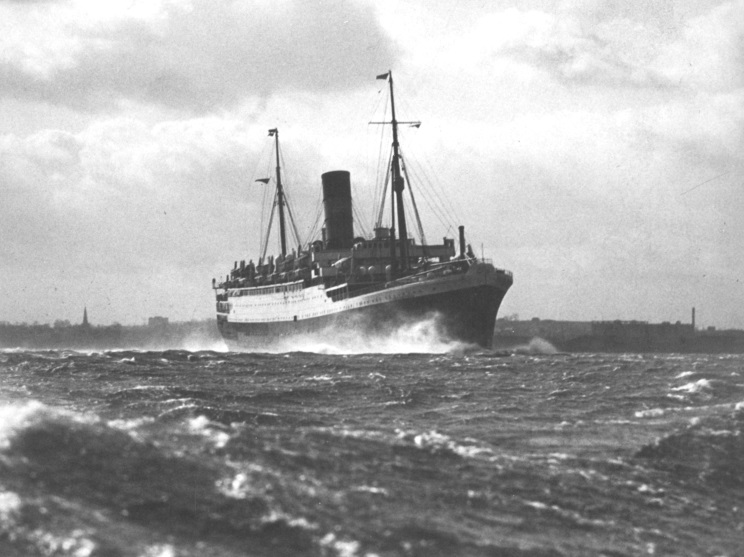|
June 17, 1940 The greatest sea disaster in British history took place. On May 31, 1920 at William Beardmore & Co. Dalmuir the Cunard Line's newest ship slipped into the water. Named Tyrrhenia she would become infamous under her second name, Lancastria. Her maiden voyage took her from Glasgow to Montreal on June 19, 1922. From then on she would sail the waters of the north Atlantic and cruise the waters of Bermuda. In Sept. 1939 she ended her last peacetime voyage in New York. The Lancastria would be converted to a troopship, she was there in Norway to evacuate troops and was then sent to France. The evacuation of the BEF (British Expeditionary Force) from France was vital to the British, hundreds of thousands of British and French troops were trapped on the coast of France by the advancing German Army. The British sent everything that would float to rescue the troops, even private boats were used in the evacuation. Charles Lightoller was among those who used private boats to rescue dozens of British troops. In 1912 Lightoller was second officer on the Titanic. Lancastria, along with several other ships were dispatched to St. Nazaire to pick up troops and civilians. It was evident to captain Rudolph Sharp that his ship was overcrowded, but this was the order of the day. Some say that about 9,000 people crammed into the Lancastria, she was designed to carry 1,785 passengers, but people filled the ship. Soon the Germans began an air attack. Hermann Göring, head of the Luftwaffe and Reichsmarschall of the Greater German Reich, promised Hitler his aircraft could destroy the BEF on the beaches. Dornier Do-17 bombers scored four hits on Lancastria and in less than 20 minuets she rolled over and sank. Thousands of people were in the water and thousands more were trapped in the overturned ship. With thousands of gallons of oil in the water soon fire broke out. Hundreds were burned to death while trying to swim to shore. In all it is speculated that 5,000 people were killed in the Lancastria. Two thousand and seventy-seven survived, about 100 are still living today. The British government and Churchill blacked out all coverage of this event. Fearing that such a huge loss would lower the British moral. However the New York Times broke the story on July 26, 1940. Most of the people in the UK did not hear of the loss until after the war. Even now the full details are not available, records on the loss are under seal until the year 2040. The wreck of the Lancastria was broken up in 1951 and the site is now a protected war grave. Rudolph Sharp had previously been master on the Lusitania and had served on both Mauretania and Olympic. Captain Sharp would also be involved in another disaster. On Sept. 12, 1942. He was the captain of the Laconia when she was sunk by the U-156. About 2,000 mostly Italian POW's were killed in what would be known as the Laconia affair. |
© 2005 Michael W. Pocock MaritimeQuest.com |
 |
| Lancastria seen underway. |